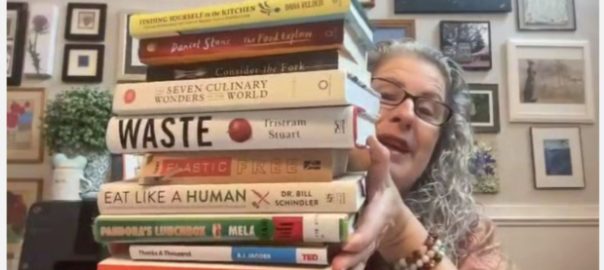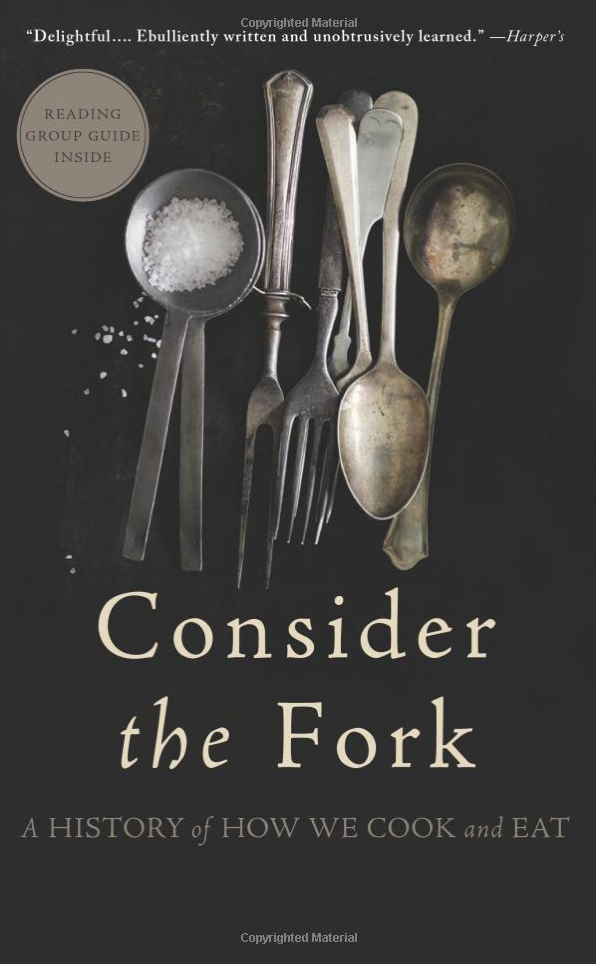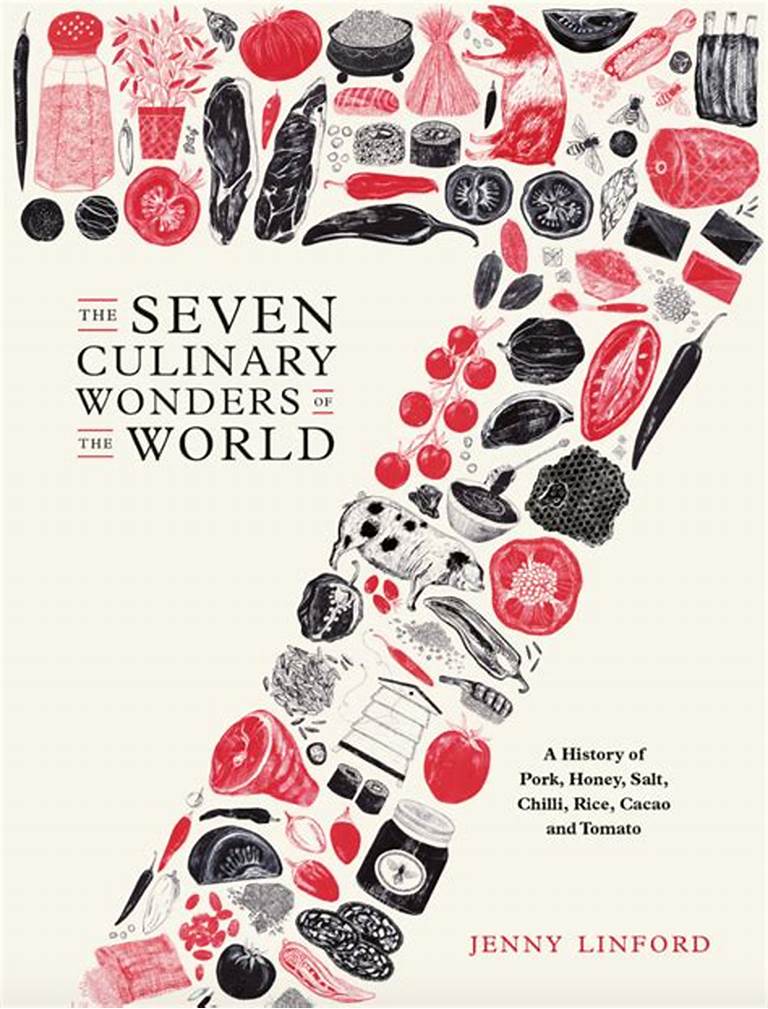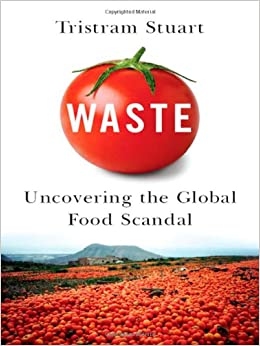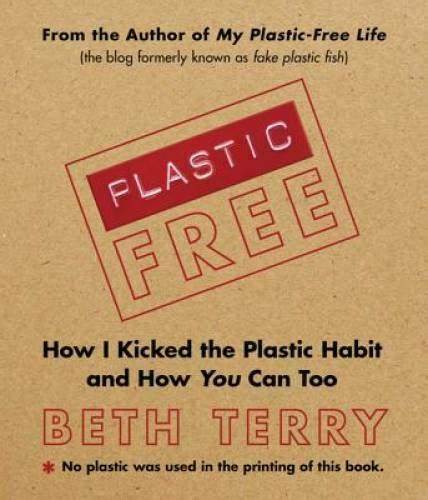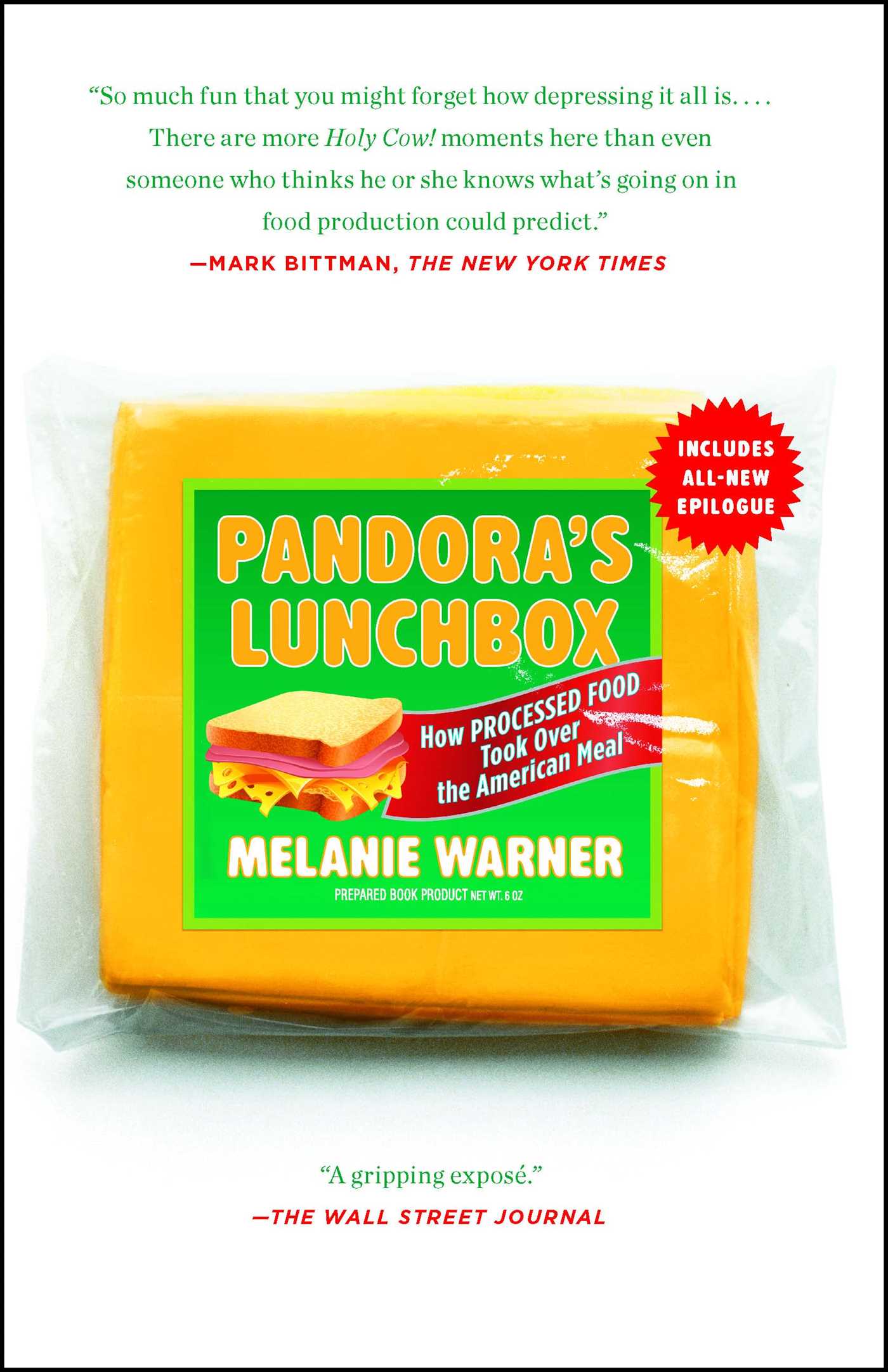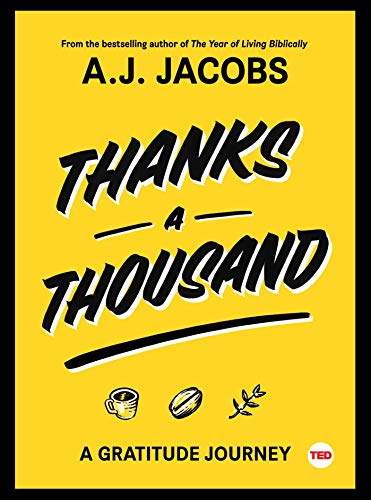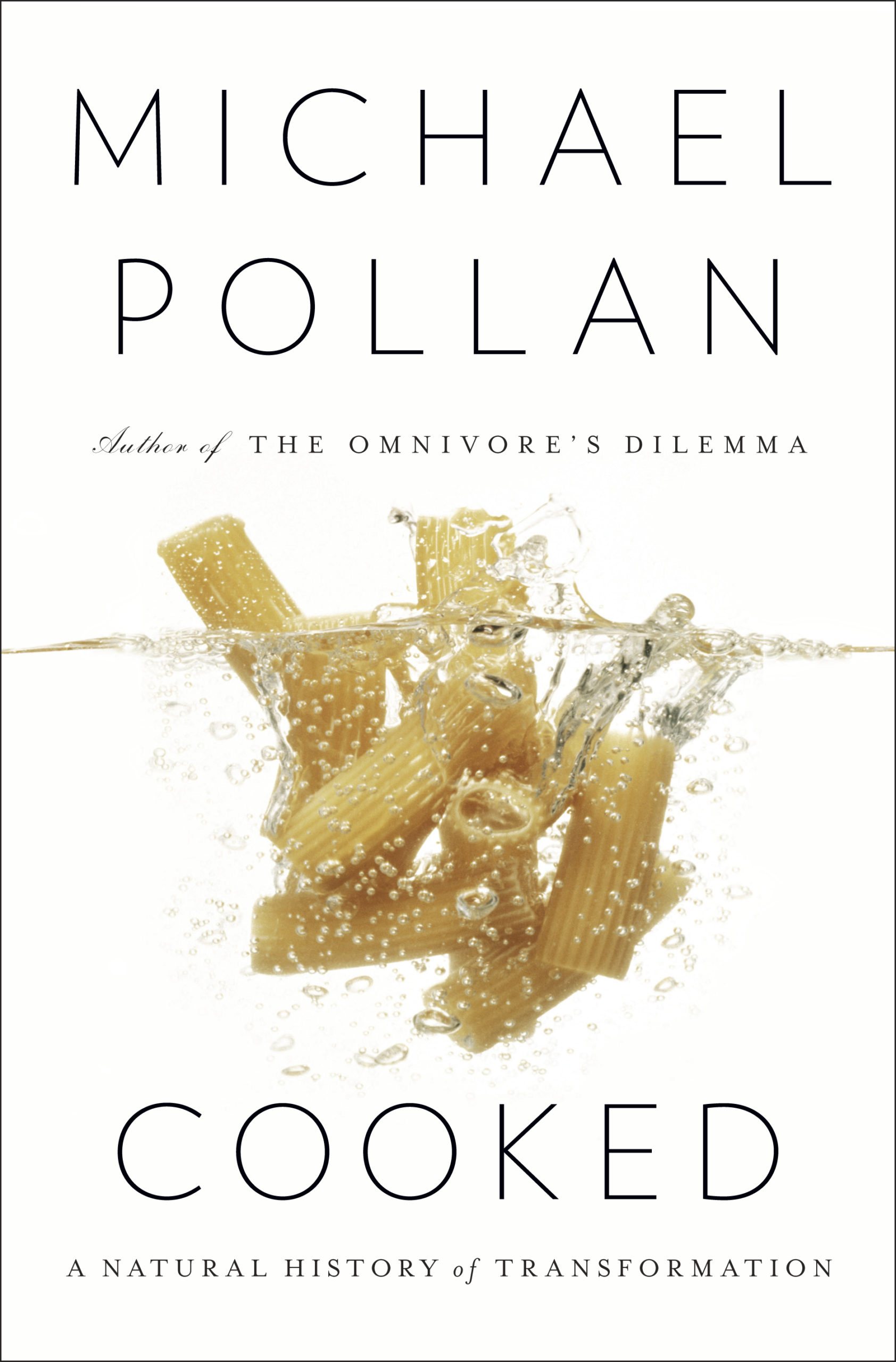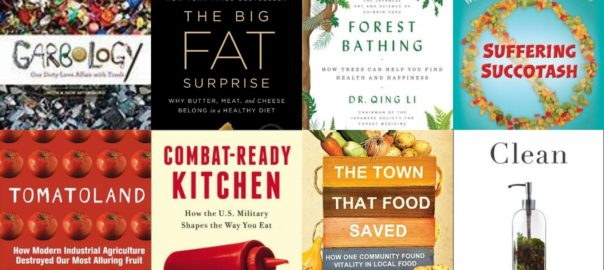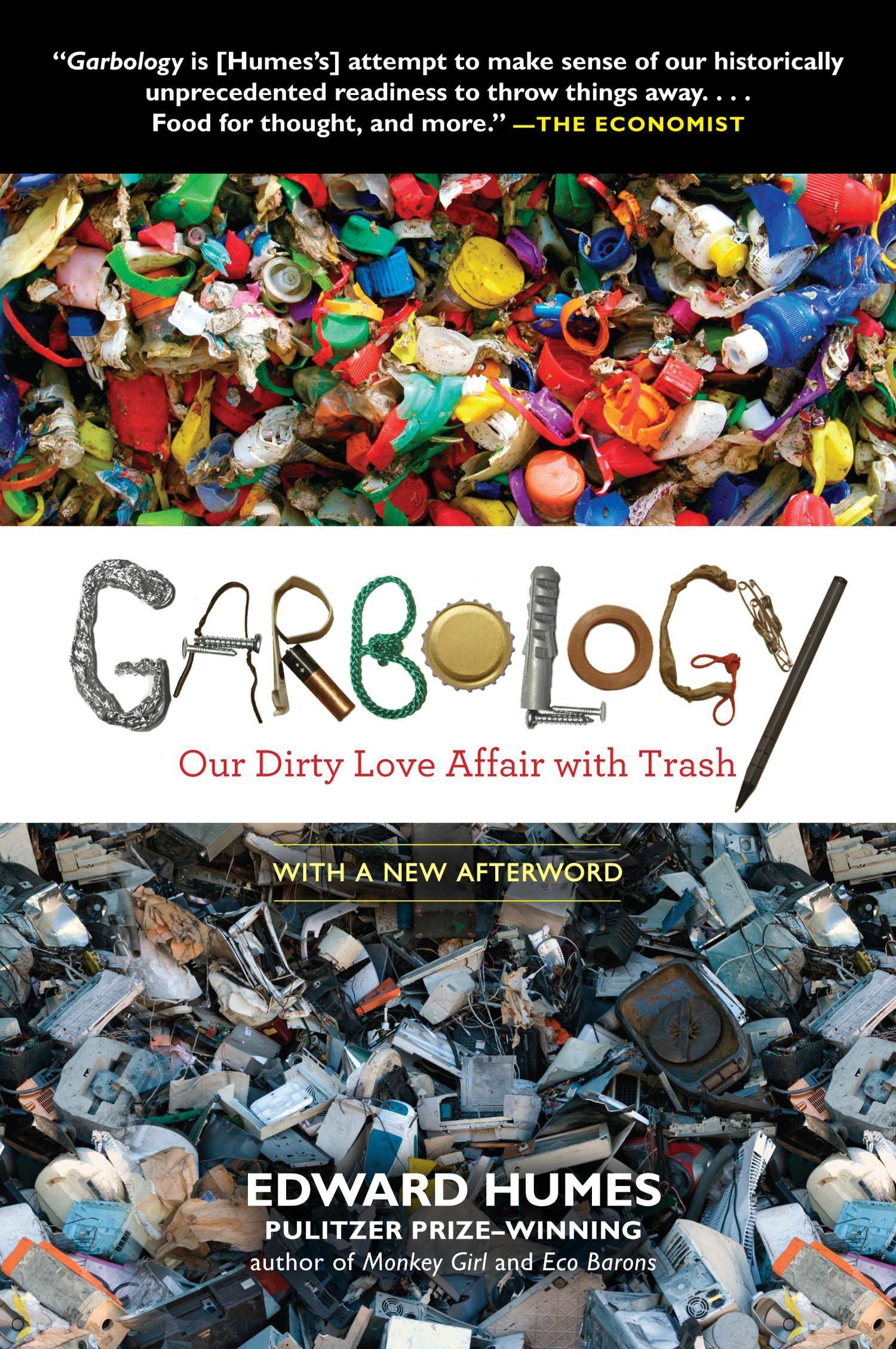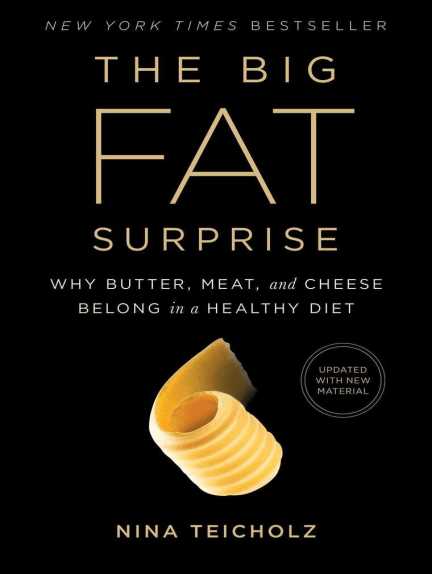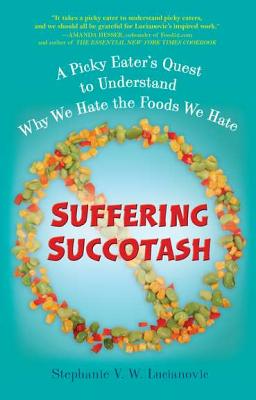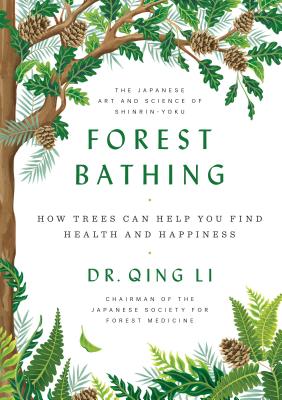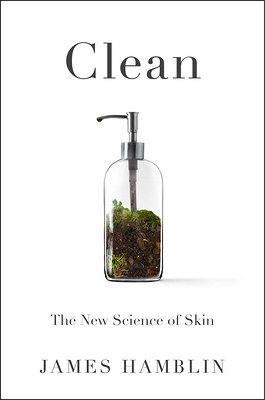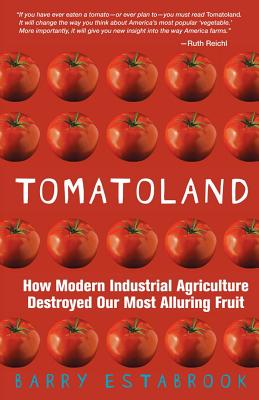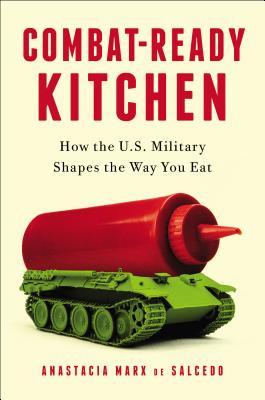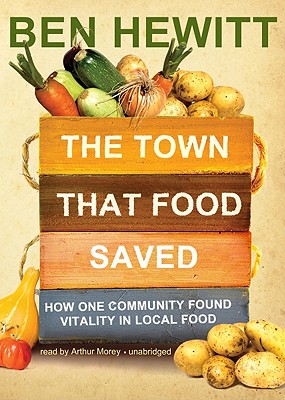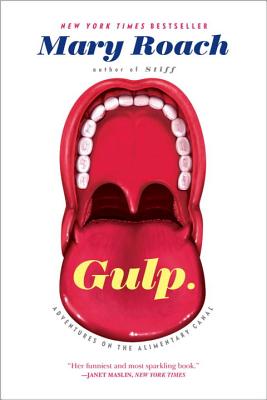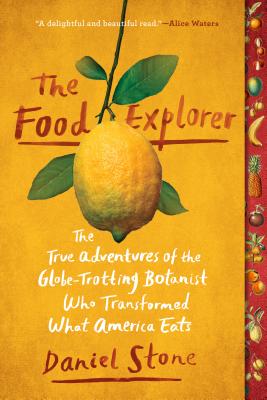Happy 2023 - It’s a brand new year and that comes with the profound opportunity to become a brand new you!
What am I looking most forward to this year?
That’s easy! I can’t wait to dive in deep with the Healthy Readers Book Club and all of the amazing books we are going to read this year.
I mean, I just can’t help but reflect on all of the fantastic books we went through in 2022 - there were so many things that really opened my eyes and captivated my interest, so let me share some of the things I liked—and some of the things I didn’t like as much—in the books we covered last year…
There was a stack of them! It was truly an amazing year for the Healthy Reader’s Book Club - we read such an incredible variety of really impressive books.
1. Finding Yourself In The Kitchen by Dana Velden
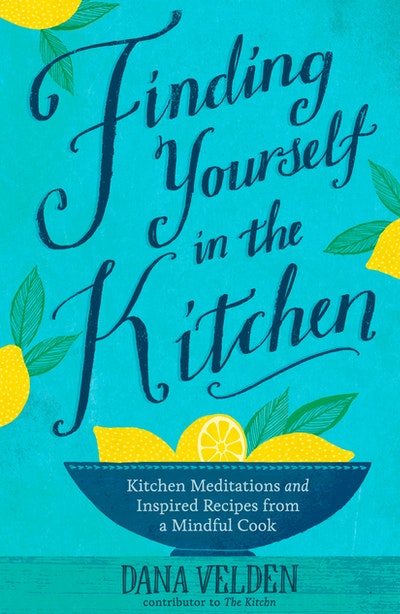 Starting with Finding Yourself in the Kitchen by Dana Velden. I love how this book started the year out perfectly with its kitchen meditations and information that really makes you think.
Starting with Finding Yourself in the Kitchen by Dana Velden. I love how this book started the year out perfectly with its kitchen meditations and information that really makes you think.
Let’s not forget about all of the delicious and good-for-you recipes to choose from!
And believe me there were some really terrific recipes in this book. I have even gone back and made some of them, including the simple weeknight curry, which was explosive in flavor and so easy to make!
Another thing that I really enjoyed about this book was that it was a quick and easy read which made it perfect to kick off the year. I definitely recommend it for anyone looking for ways to incorporate more mindfulness into their daily living as well as a few delicious recipes.
2. The Food Explorer by Daniel Stone
Then t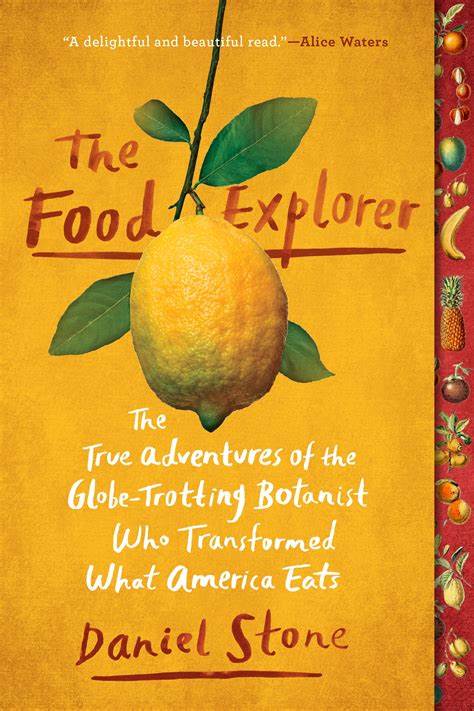 here was the Food Explorer: The True Adventures of a Globe-Trotting Botanist Who Transformed What America Eats by Daniel Stone.
here was the Food Explorer: The True Adventures of a Globe-Trotting Botanist Who Transformed What America Eats by Daniel Stone.
This was a seriously transformative book - simply amazing. It reminds us of all the things we take for granted, all the foods that we have that were from other places originally, how they were discovered and shipped back to the United States where farmers were encouraged and taught to grow the, All so that we can stock our pantry with the and now we take them for granted.
Not to mention how the travels and getting the plants back were done during a time when global transport was much more inconvenient and not nearly as easy as it is today… Talk about remarkable things!
Reading about David Fairchild’s adventures, the man who traveled the world to bring us so many wonderful and tasty things was such delight - and so much fun! Isn’t it just the best when you can learn so much from a book and ENJOY it at the same time?
3. Consider The Fork by Bee Wilson
And then of course there was Consider the Fork: A History of How We Cook and Eat by Bee Wilson and WOW, another really great book.
This book was AMAZING. We learned so much about technology in the kitchen (which was fascinating to learn the science behind so much of what goes on!), how we eat, and why different cultures eat the way they do. There were also so many interesting little stories, highlights and a plethora of annotations throughout, making it such an exciting and fun book to read.
I really enjoyed this book and highly recommend it for anyone who is interested in food and how our culture came to be…
And again, so many delicious recipes! If you love to read about travel adventures, history, and/or food this is definitely the book for you.
4. The Seven Culinary Wonders of The Word by Jenny Linford
Then we had The Seven Culinary Wonders of the World: A History of Honey, Salt, Chili, Pork, Rice, Cacao, and Tomato by Jenny Linford. Again, more wonderful and delicious recipes - plus truly beautiful illustrations and loads of interesting information.
However, while I really did like this book, I was not so happy with the layout, it was a bit disconcerting.
Let me explain. The recipes were kind of thrown in randomly and I didn’t understand the reasoning behind how they were being inserted. Sure, the pork recipes were in the pork section and so on, but you would literally be reading and then BAM a recipe would be placed right in the middle - so it was just a little strange in my opinion.
But, as I mentioned, there was a lot of really fascinating information about each of these foods plus the really lovely illustration pages that were such a delight to look at - and it was a good book, I just think I personally would have preferred the recipes to be at the end of each section instead of scattered throughout.
5. Waste Uncovering the Global Food Scandal by Tristam Stewart
That leads us to the next book, Waste: Uncovering the Global Food Scandal by Tristram Stuart.
Let me just start by saying, this was a REALLY hard book to read.
But I chose this book for the book club because I wanted us to learn more about this topic. For instance, did you know that 40% of the food that is grown in the world ends up being discarded?
I think the most eye opening takeaway from this book is that the vast majority of the waste is not due to consumer habits—although they are encouraged to bear the brunt of responsibility for it. Sure, as consumers we could do better, but there’s a whole lot more going on in the world of food waste than we realize.
And here’s the thing that really gets me - we’re constantly being told that we need to save more, waste less, reduce, reuse, recycle, etc. But as it turns out, there’s a whole raft of waste happening… from where it’s grown to the manufacturing process to the grocery stores - there must be a better way to reduce the waste! And this book certainly has suggestions about things we can do to help.
For anyone who wants to learn more about food waste and see the bigger picture of what’s going on, this is definitely a book you should read.
6. Plastic Free: How I Kicked the Plastic Habit and How You Can Too by Beth Terry
Up next, Plastic Free: How I Kicked the Plastic Habit and How You Can Too by Beth Terry. What a great book - but I will note that the most difficult thing about this book was that it took us 2 months to read because it is LOADED with information.
I mean there is A LOT of valuable information, which was a lot to take in. At times it felt like drinking from a firehose to wrap your brain around all of the information, stories, and resources. It’s not a bad thing by any means! Just something to take into consideration.
I will say how appreciative I am about all of the resources Beth put into this book and how mindful she was about everything she was talking about; how she highlighted some of the people who are really making it their mission to help reduce plastic. So inspiring!
By the way, did you know that book covers have plastic in them? I had no idea! But what’s very interesting about this particular book is that they’ve used a paper cover instead and a non-glue binding.
I was so inspired by this book that I actually changed some things in my house based on what I read—and we have decided to definitely incorporate a more plastic-free approach into our lifestyle. This book is now on my resources shelf so I can refer to it over and over as our family works on reducing our plastic habit.
And I must say, out of all the books we read last year, this one had the biggest impact when it came to making lifestyle changes.
7. Eat Like A Human by Dr. Bill Schindler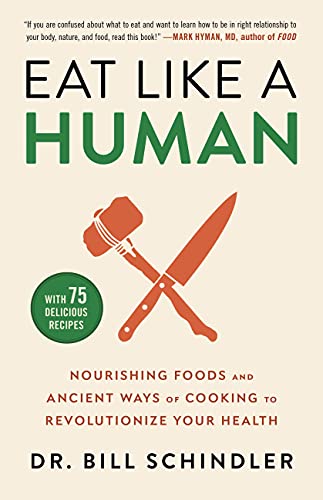
Now, for my favorite book of the entire year last year, Eat Like a Human: Nourishing Foods and Ancient Ways of Cooking to Revolutionize Your Health by Dr. Bill Schindler.
I had the opportunity to meet Dr. Schindler at a national nutrition conference and was blown away by his talk. Which is what led to my choosing this book for the book club.
How To Eat Like A Human is definitely not a dry, academic tome filled with reams of dusty anthropological data about human development. Instead it is a fascinating journey through our human development wrapped in the adventures and journeys he and his family have been through. It felt very relatable. Plus the book is chock full of recipes—we’re talking upwards of 70 different recipes! Which is not something I was expecting in this kind of a book.
Dr. Schindler has an engaging way of laying out how we eat, how we need to eat, and some of the critical things that are missing in our modern-day diet.
AND how we can make the healthy changes that are necessary for living our best life!
This was really an outstanding book, so well written, filled with interesting information—and that’s why this was my favorite book of all the great books we read last year.
8. Pandora’s Lunchbox, How Processed Food Took Over The American Meal by Melanie Warner
After Eat Like a Human we read Pandora’s Lunchbox: How Processed Food Took Over the American Meal by Melanie Warner, which is a very compelling book sharing about all the different ways our food system gets co-opted by the various things that food producers do to them.
This book is filled with a lot of industry background. I found it intriguing to learn how our food is modified. This in turn helps drive home the point that sometimes our food is changed for the benefit of the producer and it does not necessarily represent such a great choice for the consumer. .
I know what you may be thinking, “Something like this sounds dry and boring to read,” but I assure you, this was not a dry read whatsoever—it was an engaging read and I learned a few new things.
9. Thanks a Thousand, a Gratitude Journey by A. J. Jacobs
Next we read Thanks a Thousand: A Gratitude Journey by A.J. Jacobs, which is another super sweet book.
I just love the way A.J. Jacobs writes, I think I’ve actually read all of his books!
For this book, he had a thought come to him one day about what it would be like to thank a thousand people who were somehow connected to his morning cup of coffee.
Now this is truly amazing, I mean just think about all of the people involved: the lid manufacturer, the cup sleeve manufacturer, the growers, the harvesters, the roasters, and so on. It becomes an enormous chain of people… and most of the time, that whole process tends to go unnoticed in our everyday life.
It was thought-provoking to read about his process in identifying the people connected with his project. Then to read about the journeys he went on to interact with all of those people to simply say thank you.
This story was very moving, and actually helped me to deepen my own gratitude practice, and for that, I am appreciative. It’s a sweet book and a quick read, I highly recommend it.
10. Cooked by Michael Pollan
The last book of 2022 was Cooked: A Natural History of Transformation by Michael Pollan.
FIrst of all, I really like Michael Pollan and I enjoy his books a lot. He’s such a talented writer, his use of language is just phenomenal!
This book is the story of the incredible journey that he went on to learn about the different elements, and finding a food that represented that element, and then diving into it. The entire thing was so very enjoyable. I think you’ll agree that he is a very amusing writer - in addition to the wonderful information he shares, this book is loaded with laughs!
And the way he presents the information and helps you think about it in a way that you can fully absorb it and learn from it is astounding.
I can honestly say that this was the perfect book to end the year with because it lined us up to think about the way we interact with our food and all of the different elements involved.
I personally also really enjoyed all of the adventures that Michael took us on and all of the hidden gems during the guided Healthy Readers Book Club process. Things like video interviews with various people or different aspects of the science behind what he was talking about. If you’re looking to read about foodie adventures this is definitely a good book to choose.
All-in-all we had 10 AMAZING books last year…
And we have 10 more coming in the brand new year ahead of us!
I hope you’ll join us on this exciting and informative reading adventure this year, become a member of the Healthy Readers Book Club and enjoy the guided process to get to a new level—a deeper dimension—of reading a book and not only enjoying it, but learning from it too.
And be sure to check out some (or all) of these incredible books I’ve mentioned to begin the transformative process of understanding the principles of healthy living and eating!
Affiliate Disclosure: Some of the above links may be affiliate links. If you use them, at no extra cost to you, I may receive compensation which helps me continue the work I do for this channel. Thank you for your support.

